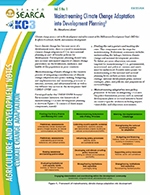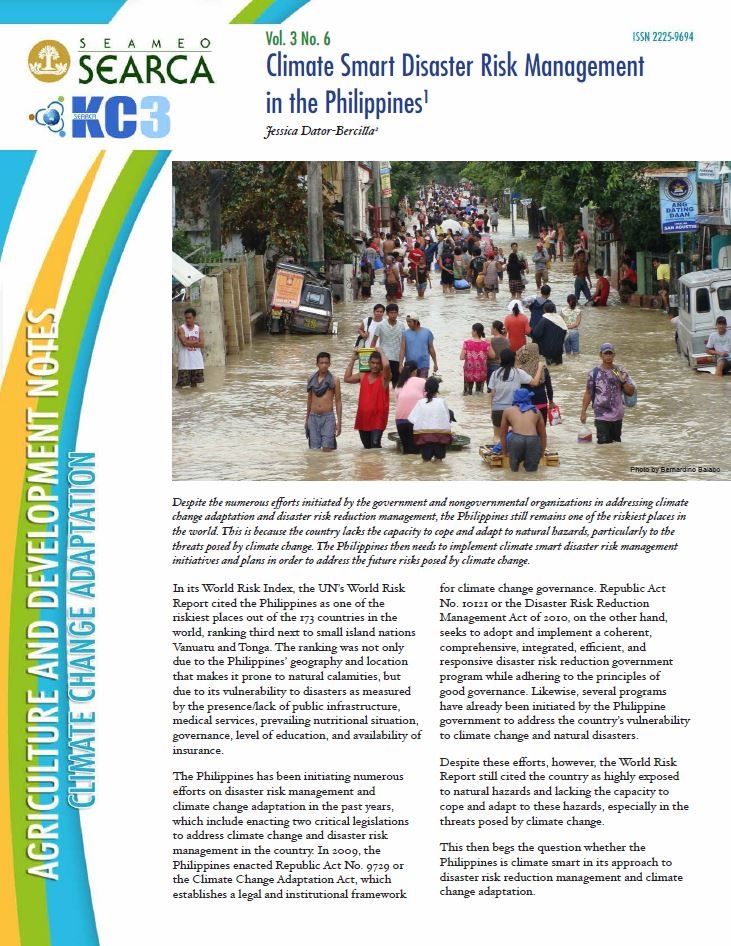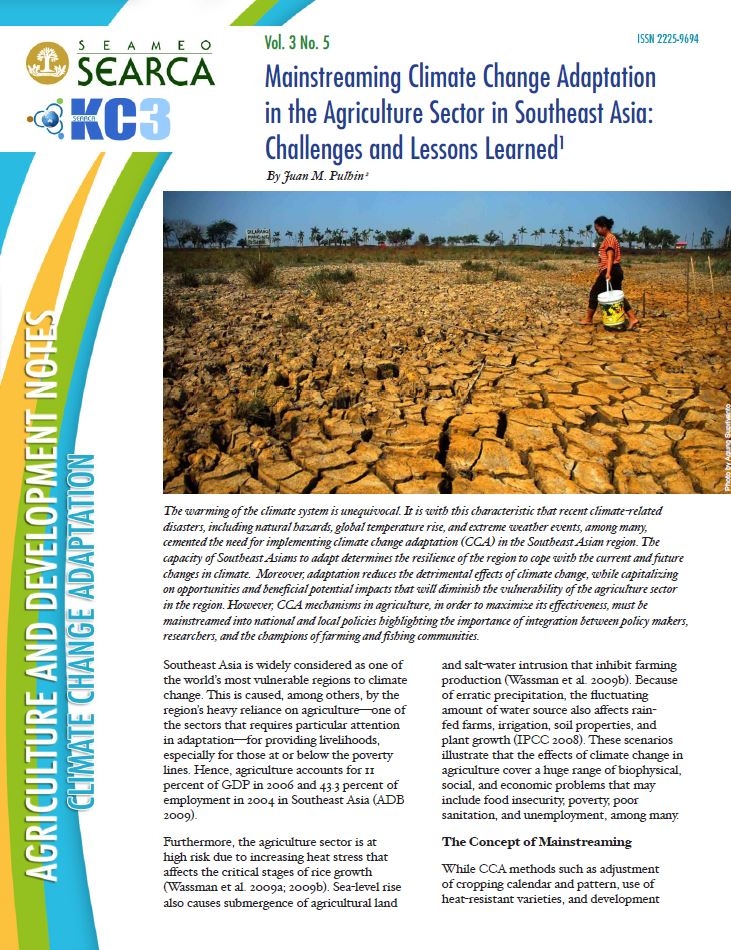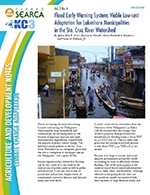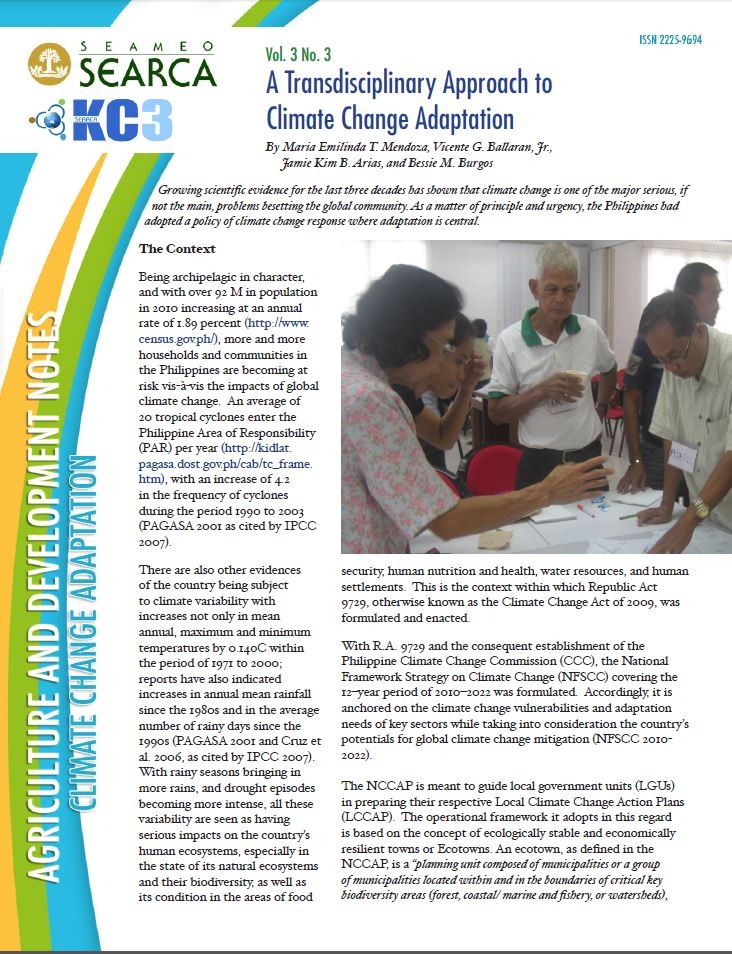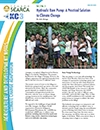Adaptation Notes
Though people have already adopted measures to limit the negative effects of climate change, more extensive adaptation is required to reduce vulnerability to climate change. Hence, it is important to assess climate impact and vulnerability as well as the adaptation options employed to increase resilience.
Climate change poses a risk to the development and achievement of the Millennium Development Goals (MDGs). It affects livelihoods, health, and economic development. Since climate change has become more of a development issue, there is a need to mainstream climate change adaptation (CCA) into national planning as part of broader policies for development. Development planning should take into account anticipated impacts of climate change particularly on the livelihoods, resilience, and health of the population in poor countries. Mainstreaming climate change…
Despite the numerous efforts initiated by the government and nongovernmental organizations in addressing climate change adaptation and disaster risk reduction management, the Philippines still remains one of the riskiest places in the world. This is because the country lacks the capacity to cope and adapt to natural hazards, particularly to the threats posed by climate change. The Philippines then needs to implement climate-smart disaster risk management plans and initiatives in order to address the future risks posed by climate change.
The warming of the climate system is unequivocal. It is with this characteristic that recent climate-related disasters, including natural hazards, global temperature rise, and extreme weather events, among many, cemented the need for implementing climate change adaptation (CCA) in the Southeast Asian region. The capacity of Southeast Asians to adapt determines the resilience of the region to cope with the current and future changes in climate. Moreover, adaptation reduces the detrimental effects of climate change, while capitalizing on opportunities and…
Floods are among the most devastating hazards confronting the Philippines. Unfortunately, many households and communities are becoming more at risk because of improper land use and rapid environmental degradation, coupled with the impacts of global climate change. The lakeshore municipalities in the Sta. Cruz River Watershed are no exception, given that the area is contiguous to the largest lake in the Philippines—the Laguna de Bay. Recent experience has shown that flooding can be very costly as it can result in…
Growing scientific evidence for the last three decades has shown that climate change is one of the major serious, if not the main, problems besetting the global community. As a matter of principle and urgency, the Philippines had adopted a policy of climate change response where adaptation is central.
The manifestations of climate change are now felt by many, especially by upland farmers whose agricultural production is vulnerable to the increasingly unpredictable weather conditions. Although the local communities in the Cordillera region have been able to maintain a sustainable relationship with the resources through their indigenous knowledge and practices, climate change has severely affected the region’s agriculture sector. As such, climate change adaptation (CCA) measures in agriculture were developed in Benguet and Ifugao provinces in the Cordillera. Using the…
In the face of the threats posed by climate change, initiatives for the conservation of natural resources are now being prioritized globally, particularly the conservation of watersheds and forests to reduce carbon emissions. REDD+ (Reducing Emissions, Deforestation, and Forest Degradation and the Conservation of Existing Carbon Stocks) is now gaining ground as a sound mechanism to address climate change. However, countries need to mainstream and adequately implement the social, governance, and environmental safeguards of REDD+ for the mechanism to succeed.…
Watershed is critical to economic development and environmental protection in Southeast Asia. Thus, managing them effectively is key in the pursuit of sustainable development. Watershed management, however, is a complex decision-making process. The threat brought by climate change further puts stress on the already-stressed watersheds in the region, and would further complicate the already-complex process of watershed management and governance. Extensive research is therefore needed to provide an empirical database that will predict the future changes in watersheds. An integrated…
Anangue is an upland village located in Murcia, Negros Occidental, Philippines. The primary livelihood in the village is farming. However, the villagers experience low agricultural productivity due to the lack of access to sufficient water. The nearest source of water in the village is a freshwater spring located 240 meters away and elevated by 80 meters. Thus, the community greatly depends on rainfall for domestic consumption and agricultural production. However, with the onset of climate change causing variations in the…


